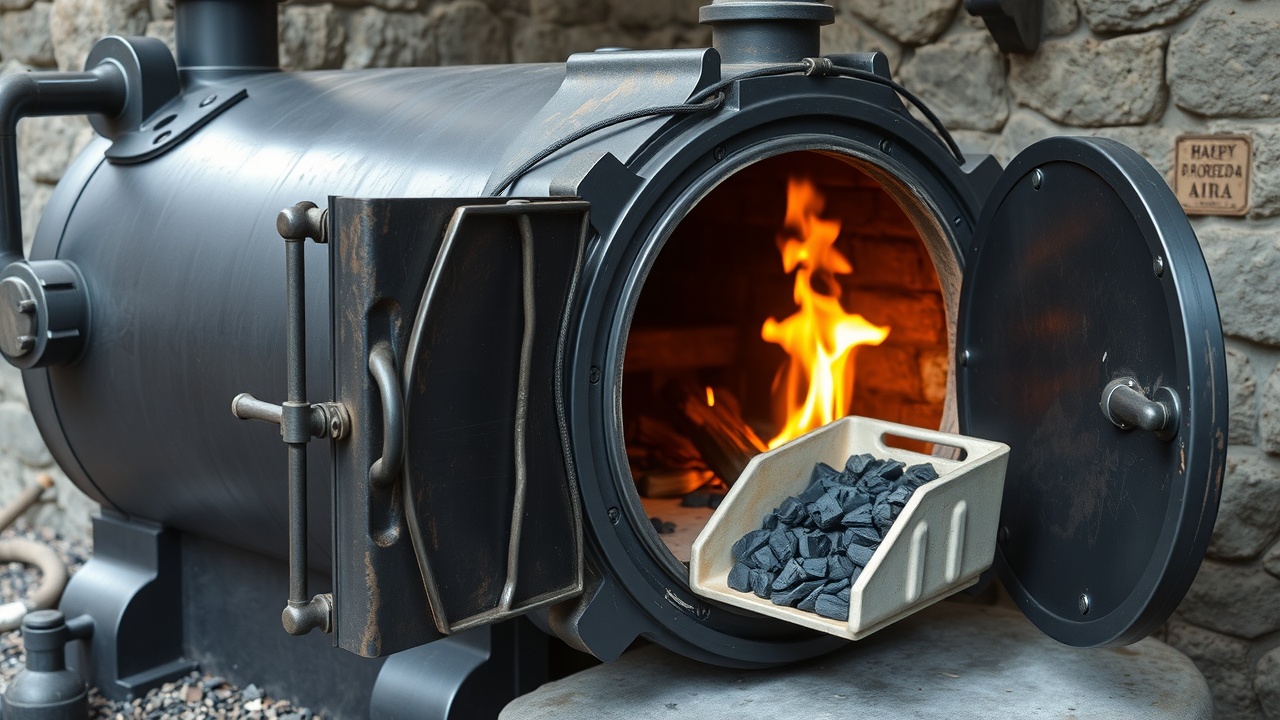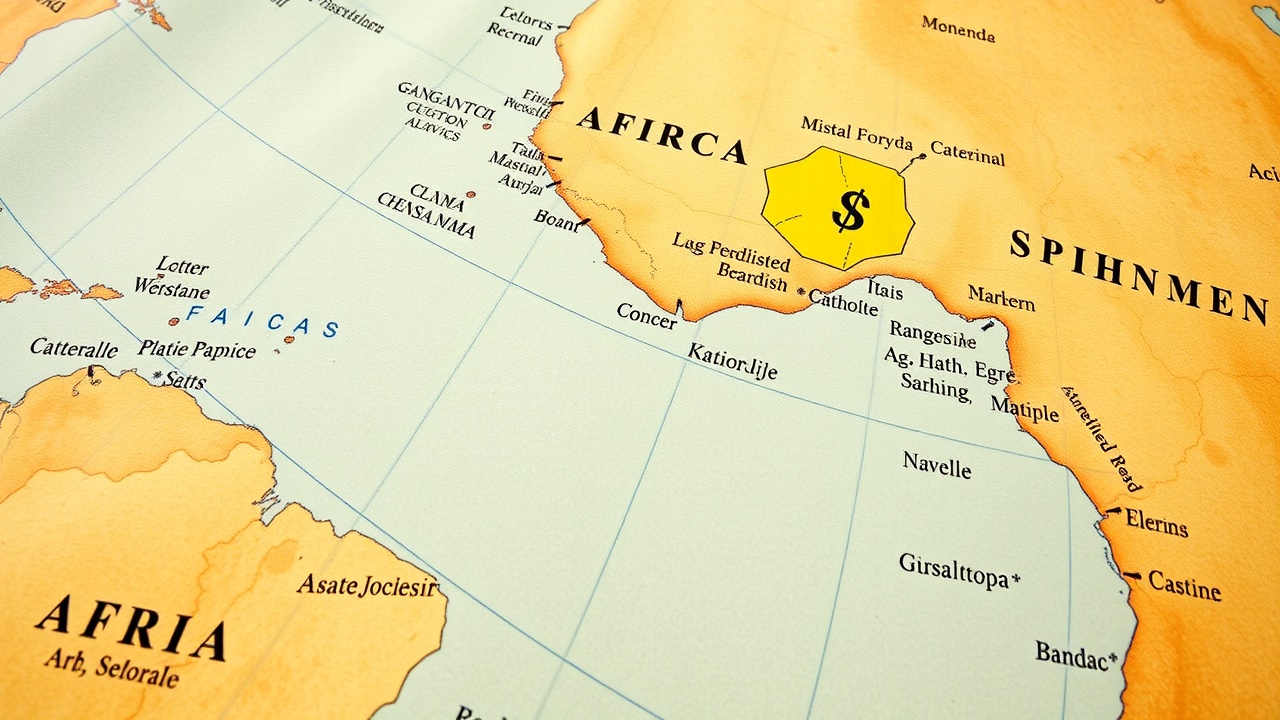
According to James Mackreides, investors don't seem to want to seize the opportunity, despite the fact that the demand for coal is only increasing
The final coal-fired power plant in the UK, Ratcliffe-on-Soar, shut down Unit 4 on September 30, 2024. The shutdown signaled the end of the UK's 142-year coal-fired power generation history and the beginning of a new era for the economy.
The government's announcement in 2015 that the UK would cease its coal-powered generation capacity marked the beginning of the countdown to closure, although the gradual reduction in coal-fired electricity generation actually started in the late 1960s.
In 1965, coal accounted for about 60% of UK energy consumption; ten years later, that percentage dropped to 35%, and by 2000, it was only in the mid-teens.
The crucial role coal has played in the UK economy over the last two to three centuries cannot be denied. Because of the nation's abundant coal reserves, factories were dominated by steam engines, which fueled the industrial revolution.
The annual coal mining output in the early 1700s was about three million tons. That had increased to over 30 million tons by the 1830s. In the middle of the 19th century, real GDP growth per capita peaked at around 1.25% annually due to the coal-powered economy. For comparison, real GDP per capita has decreased during the last five years. Between 1870 and 1900, the GDP as a whole increased by 50%.
Coal is an excellent source of energy. The yield, which is about 30 megajoules (MJ) per kilogram (the exact amount depends on the type of coal used), indicates that it releases between 80 and 100 percent more energy when burned than wood. Once mined, it takes little to no effort to convert into energy.
Emissions of carbon are a problem. The most polluting fossil fuel is coal, which emits 50% more carbon dioxide than other refined fuels like gasoline and jet fuel and 100% more than natural gas.
Ratcliffe-on-Soar was among the cleanest coal-fired plants. It was the only coal-fired power plant in the United Kingdom equipped with an emission-control system called Selective Catalytic Reduction (SCR), which can reduce NOx (nitrogen oxides) emissions by 7095 percent.
Additionally, a flue-gas desulphurization (FGD) plant was installed to extract sulfur dioxide (SO2) from exhaust flue gases prior to their release into the atmosphere. However, it wasn't enough to keep the plant safe from the unrelenting advance of greener, cleaner energy.
The UK's transition away from coal is the exception rather than the rule, though. Construction of new coal-powered plants in China reached a ten-year high in 2024, as the nation started constructing 94.5% of new coal-power capacity and restarted 33% of projects that had been put on hold. Over the previous three decades, the world's coal consumption has doubled.
The demand for coal is expected to continue to grow globally for some time to come. Though there are opportunities in the industry, investors have avoided it despite the booming demand for the black stuff.
Coal comes in a variety of forms, each with unique properties and applications.
The oldest type of coal, anthracite, has the highest heating value of all the coal ranks and burns relatively cleanly when compared to other types, which makes it ideal for the metals industry.
Bituminous coal, the next best kind, is an essential fuel and raw material for producing coking coal for the iron and steel industry in addition to being used to produce electricity.
The least energy-intensive coal types are sub-bituminous and lignite, and because of its youth, lignite typically contains a high amount of moisture.
In addition to these various geological characteristics of the rock, there are more general definitions used in the industry.
These are thermal coal, which is a blend of coal that is best suited for producing energy, and metallurgical coal, also known as coking coal, which is a mixture of coals that are combined to produce the necessary qualities for the production of coke, an essential component in the production of steel.
The largest market segment is unquestionably the thermal coal market. Global coal trade, which is divided between thermal (1,178 million tonnes) and metallurgical (368 million tonnes), is expected to have hit a new all-time high of 1,545 million tonnes in 2024, according to the International Energy Agency (IEA).
Mixing thermal coal results in a high energy output and low impurity levels. Australia, South Africa, and Indonesia are the top exporters of thermal coal worldwide.
British coal's demise.
Due to its relative ease of mining and transportation, coal revolutionized the United Kingdom.
Since coal deposits only form under particular geological conditions, they are found in specific locations throughout the world.
Deep underground seams that were formed over hundreds of millions of years provided the majority of the coal produced in the United Kingdom. Since the UK is a small nation, moving coal from the mines to the industrial areas was a reasonably simple and economical process. The early adoption of steam technology allowed access to these seams.
However, the easily accessible deposits have been mined away over time, and mining has become much more expensive. The high mining costs in the UK became more and more unfeasible when compared to global benchmarks because coal is a commodity that is traded extensively and has a global benchmark. In the UK, mining it eventually became unprofitable.
In contrast, it is far less expensive to run the massive, city-sized mines that . South Africa, Australia, and Indonesia. Despite having to be transported throughout Australia and the rest of the world, surface mines possess a significant cost advantage over deep mines, as they are Australia's largest coal mine by output.
A close-up of a world giant.
With 15 active mines that employ 10,000 people in Queensland and New South Wales, Glencore is one of Australia's biggest coal exporters. The company's Australian mines produce the majority of their coal, which is exported for use in the production of steel and electricity.
One of the biggest producers and dealers of coal in the world, Glencore, mined 19.9 million tonnes of metallurgical coal and slightly less than 100 million tonnes of thermal coal in 2024. In July 2024, the company acquired Elk Valley Resources (EVR) from Teck Resources, which produced the majority of its metallurgical coal in Canada.
We can gain a true understanding of the coal industry's operations by dissecting the company's coal earnings. The cost of producing the coal used to generate energy is significantly lower than that of the other two main types. In 2024, it cost the company £68.01 per tonne, which is a little less than the £70.05 per tonne that was recorded in 2023. Compared to 2023, the cost of producing coal used in the steelmaking process was £115.06 per tonne, as opposed to £141.3% per tonne.
Compared to 2023, when it achieved £267.4 per tonne, Glencore reported an average sale price of £201.5 per tonne for steelmaking coal production during the year. Since the price had to be modified depending on the mix of coal produced and sold, both were much less than the typical settlement price that the company and buyers had negotiated. The average realized price of the steel-making coal that Glencore sold in 2024 was £39.2 per tonne, which was less than the settlement price of £240.7 per tonne for prime high-coking coal. To put it simply, the company's mix of metallurgical coal was of lower quality, so it had to offer buyers a discount.
Based in the Newcastle region of New South Wales, Australia, the Newcastle coal price is the benchmark for the company's thermal coal production. Newcastle is the world's largest coal export port. According to Glencore, the average price for Newcastle coal in 2024 was £134.08 per tonne, which was lower than the £172.08 per tonne price in 2023. Given the quality of the coal it supplied, the company was forced to accept a 30% discount per tonne in 2024 over the market price.
All of the coal that Glencore produced and sold into the market in 2024 generated a healthy profit.
Steel-making coal accounted for 45% of the group's adjusted earnings before interest, tax, depreciation, and amortization (Ebitda), while energy coal accounted for 32%. Glencore's pricing data sheds light on the prices and market distribution of various coal types.
It's also important to note that these prices do not include transportation costs, which, depending on volume, distance, and mode of transportation, can raise the price by around £40 per tonne.
Coal can be transported by train across the United States for as little as £10 per tonne, but it can cost as much as £40 to £50 per tonne, excluding shipping costs, to move it by truck from major ports in Africa.
As part of Teck's efforts to concentrate on metals essential to the energy transition, the Canadian mining behemoth sold the Elk Valley business to Glencore in 2024 for £7 billion in cash.
Over the past few years, companies seeking to lessen their exposure to the coal industry have agreed to a number of asset sales, including this one. In 2024, Anglo American listed its coal and steel-making operations in Australia for sale, and the two parties agreed to sell the entire company by the end of the year.
During the first quarter of 2018, BHP announced its decision to leave the World Coal Association, and Rio Tinto sold its last remaining coal mine. In the ensuing years, BHP also gave up on plans to prolong the life of some mines and sold off several of its coal ventures.
The desire to please environmentalists has been the primary motivation for miners to give up coal. Despite the ongoing growth in demand, investors do not want to have any coal exposure in their portfolios.
The most recent estimates from the IEA indicate that the demand for coal worldwide experienced a significant recovery following the pandemic, reaching a record high of 8.8 billion tonnes in 2024. Despite the growing use of renewable energy in the global energy system, the IEA predicts that demand will stay at roughly this level for the next few years until 2027.
The use of coal is not increasing.
As the population and economy grow, so does the demand for electricity in some emerging economies, which is driving up demand for coal.
As a result of their inability to construct renewable resources on the same scale as developed economies, these nations are mainly depending on coal to make adjustments.
For instance, it is anticipated that demand from China will decrease over the next two years, but an increase in demand from India and the rest of the world will counteract the decline. India's growing need for steel will be the primary driver of demand. Demand for premium metallurgical and coking coal will rise as a result of plans to greatly expand capacity over the next few years by the nation's major steel producers, Tata Steel, JSW, JSPL, and ArcelorMittal Nippon Steel (AMNS).
Overall, the metallurgical coal market is expanding three times more quickly than the thermal coal market.
Overall, blast furnaces and steel-making coal account for 71% of global steel production, and this market is proving to be far more resilient to change than the thermal coal market.
Hydrogen is one of the very costly substitutes for high-quality metallurgical coking coal in the steel-making process.
According to the World Steel Council, the primary alternative, electrical arc furnaces, which produce new steel by melting iron with natural gas and hydrogen or by feeding it with recycled steel, currently account for about 29% of the world's steel production market. Cost is still a problem. The use of electrical arc furnaces, which are extremely power-hungry, is sometimes increasing the demand for thermal coal-based electricity generation.
In summary, the global demand for coal is expected to stay largely stable over the coming years. Opportunities are abundant for investors who are prepared to concentrate on the market's fundamentals.
One of the most straightforward strategies to profit from the coal market in the upcoming years is to invest in Glencore (LSE: GLEN). Just less than half of the company's adjusted EBITDA for 2024 came from its coal production, trading, and marketing operations.
The company makes a lot of money from coal, but it also produces a lot of lead, copper, zinc, and other essential metals. Another extremely undervalued asset is the group's trading and marketing division.
One of the biggest commodities traders in the world is Glencore. It has unparalleled access to information and a huge network of ships, pipelines, and trading posts. Consequently, it can move commodities to their proper locations and make the most profit possible in these opaque markets. Although trading has brought in billions of dollars for the company, the division is somewhat of a mystery, requiring hundreds of billions of dollars in capital and extraordinary levels of liquidity every day.
As a result of the recent volatility in the commodity market, the company generated a healthy £4.08 billion in free cash flow last year. A cash return of £2.02 billion, divided between dividends and share buybacks, as well as additional capital returns in the upcoming year, were promised by the company in its 2024 results. The stock is currently trading at a forward price-to-earnings (p/e) multiple of 11:07, and projections indicate that it could yield a dividend of 4:6 percent in 2025 and 6:2 percent in 2026.
Anglo American spun off Thungela (LSE: TGA) in 2021. With some assets in Australia, it is a thermal coal miner from South Africa. The company's current valuation is approximately 667 million, up from about 200 million at its initial public offering.
Although Thungela is an unpopular and undesirable pure-play coal producer, it nevertheless creates a good that consumers are willing to purchase on the open market. Based on current projections, the stock is trading at a forward p/e multiple of just 2.4, and the company's sales and EBITDA are anticipated to grow modestly over the next few years.
In addition to being financially strong, Thungela has stated plans to give investors a sizable return on their investment, even as it has committed to mergers where feasible. For 2025 and 2026, Duncan Hay and Tom Price, analysts for Panmure Liberum, predict yields of 34% and 43%, respectively.
Both Australia and Hong Kong list Yancoal Australia (Sydney: YAL). With assets in Western Australia, Queensland, and New South Wales, it is one of the biggest pure-play coal miners with a market valuation of A£7.8 billion (3.9 billion).
The company made A£1.2 billion net in 2024 and is projecting flat production for the upcoming year, which, if coal prices stay flat, indicates a comparable return in 2025. The stock's dividend yield is approximately 11%, and it is trading at a forward price/earnings ratio of about 6.5.
In the United States, Core Natural Resources (NYSE: CNR) is the biggest pure-play coal miner. Established at the start of the year through the merger of Consol Energy and Arch Resources, the business is still in its infancy and is still working to persuade Wall Street that it is worthwhile to purchase.
The stock is now only 5:09 times the consensus forward earnings as a result. A yield of 53.4 percent is anticipated by analysts for 2025.
Warrior Met Coal (NYSE: HCC), Peabody Energy Corp (NYSE: BTU), and Alpha Metallurgical Resources (NYSE: AMR) are the next three biggest US-listed companies.
Wall Street consensus estimates place Alpha at the lowest of the group, trading at a 2025 forward p/e of 4.7. Its market capitalization is £2 billion, and its balance sheet shows about £500 million in cash. Alpha does not pay a dividend, like many US companies, because it prefers to buy back shares. However, since 2018, the group has cut the number of outstanding shares by 50%.
Whitehaven Coal (Sydney: WHC) and Exxaro Resources (Johannesburg: EXX), one of the top five coal producers in South Africa, are options available elsewhere in the world.














Leave a comment on: Should you purchase King Coal since he hasn't been overthrown yet?